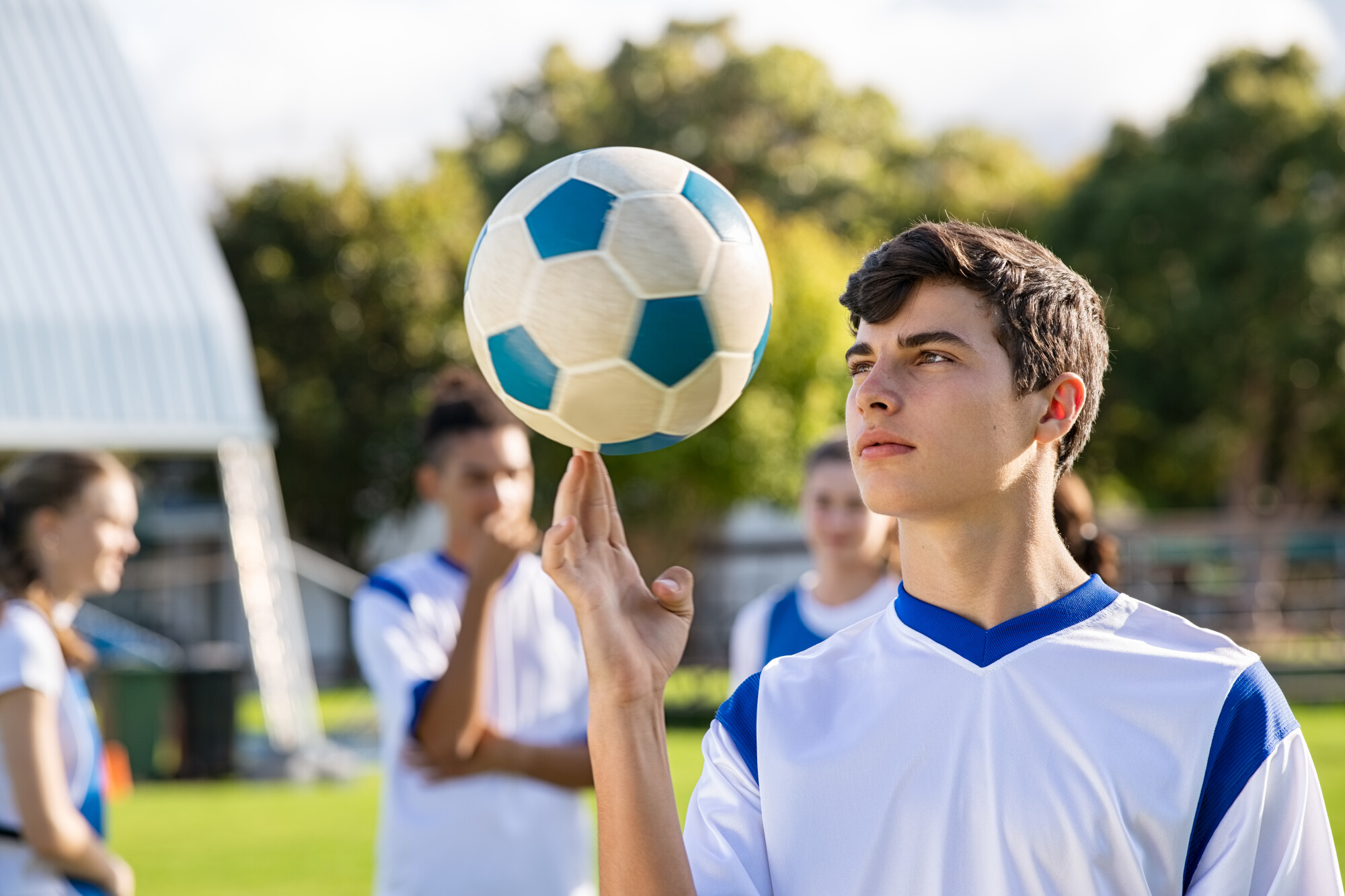
Fewer kids played sports in 2022 than in the prior year, according to USAFacts.
Engaging in sports offers many benefits for children. Still, ensuring that children are physically fit for sports participation is vital. Sports physicals are the key.
At what age do kids require a sports physical? Keep reading to learn about planning for safe and healthy sports engagement.
A sports physical is a kind of medical exam. It assesses whether a child is fit and healthy enough to partake in physical activities and sports. It’s an evaluation of a child’s general health, medical history, and more.
The ideal age for a child to undergo their first sports physical varies based on sports participation. Still, most healthcare professionals recommend that children start getting sports physicals as early as age six or seven if they’re involved in organized sports activities.
For older children, especially those entering middle or high school, sports physicals become more essential due to the increasing intensity and physical demands of organized sports at this level. Sports physical requirements may vary based on state regulations and school policies. It’s a good idea to look into specific guidelines.
First, you can expect a medical history review. It involves discussing the child’s medical history and any family history of heart disease or other relevant health issues. For children with underlying conditions such as diabetes, a medical history review is even more critical.
Next, there’s the physical examination. It assesses various aspects of a child’s health, including:
A thorough sports physical helps to pinpoint possible risks that could lead to injuries or medical complications. For example, children diagnosed with conditions such as diabetes need specific guidance to manage their blood sugar levels during sports.
Undiagnosed conditions like diabetic retinopathy or diabetic neuropathy could impact their ability to play safely. Are you wondering what else they’re good for?
A sports physical provides insight into a child’s physical fitness and readiness for sports. This can help parents, coaches, and healthcare providers develop strategies to support the child’s health and performance, especially if they have any medical conditions or physical limitations.
For children with existing medical conditions like diabetes, asthma, or cardiovascular concerns, regular sports physicals are crucial for safe participation. Diabetic children, in particular, require careful attention to ensure that their blood sugar levels remain controlled during physical exertion.
The physical also allows healthcare providers to address any specific concerns related to diabetic neuropathy or the risk of diabetic wounds, which could complicate sports participation.
Each state and school district may have different youth sports physical guidelines, so it’s essential to be familiar with local regulations. In general, the guidelines include several aspects.
Many schools and sports organizations require an annual physical examination for children involved in sports. This ensures that any changes in health status are promptly addressed.
Keeping the child’s health records updated allows for better monitoring of conditions such as diabetes and helps manage risks related to diabetic retinopathy or neuropathy.
In some cases, a general sports physical might indicate the need for further evaluation by specialists, such as a cardiologist for heart concerns or an endocrinologist for diabetes management.
Children with diabetes can benefit from sports participation as it promotes healthy weight management and improves cardiovascular health. Still, they need careful monitoring during physical activities. Healthcare providers can provide tailored advice on managing diabetes while participating in sports, ensuring that blood glucose levels remain stable.
It’s a condition that may affect children with poorly managed diabetes and can impact vision. Regular eye check-ups as part of a comprehensive sports physical can catch early signs of diabetic retinopathy, allowing for timely intervention.
It’s a kind of nerve damage that can affect the legs and feet, leading to pain or numbness.
For children who play sports, managing diabetic neuropathy is essential to prevent injury and maintain optimal performance. Sports physicals can help evaluate nerve health and suggest modifications to the child’s sports routine if necessary.
Not all sports physicals are the same. One aspect to pay attention to is your child’s age.
At this age, sports physicals are simpler but important, especially for children participating in youth leagues or community sports. The focus is on growth and development, checking for any issues that could hinder safe participation.
This age group often starts middle school sports, where the intensity of physical activities increases. Here, sports physicals become more detailed, examining the child’s endurance, strength, and potential chronic conditions.
High school athletes often face rigorous training and competitive play. Sports physicals at this stage include more comprehensive cardiovascular and musculoskeletal evaluations to ensure the child is fit to withstand more demanding physical activities.
Although Medicare often covers individuals over 65, there are some exceptions. For instance, a child with disabilities or certain health conditions might be eligible for coverage under a family member’s plan.
Children with diabetes or related health complications may receive medical care support through specific Medicare programs or Medicaid. Consulting with healthcare providers can help determine if there are coverage options available. It can apply to sports physicals or related treatments.
At what age do kids require a sports physical? Now, you can plan for the future and watch your child become a star on the field.
Family Medicine Austin is here to help. Our qualified and caring team offers a full spectrum of care at every life stage. From sports physicals to vitamin IV therapy, you can count on our medical expertise.
Don’t wait to schedule a convenient Family Medicine Austin appointment soon.